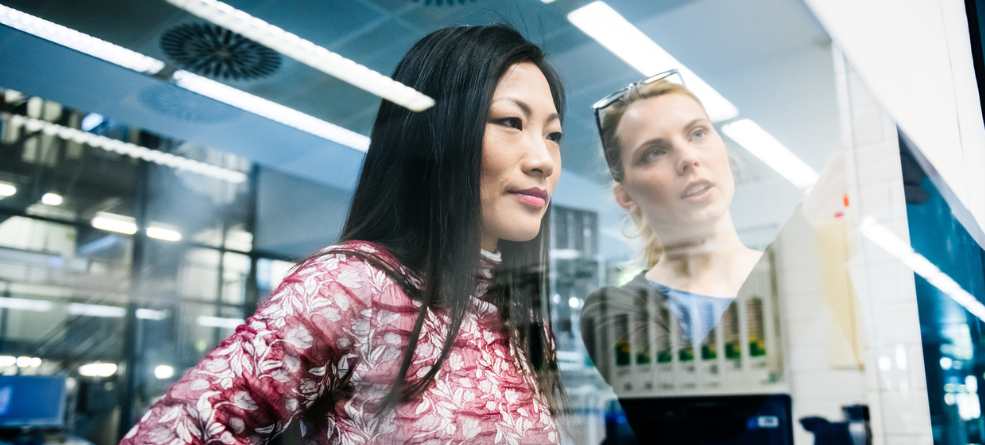Embedding AI into the workplace
Digital -
In July, TAL sponsored a luncheon series hosted by the Fund Executives Association Limited (FEAL), bringing together fund executives in Brisbane, Sydney, and Melbourne for insightful discussions on the growing impact of AI in the workplace.
Dan Taylor, TAL’s General Manager of Group Partnerships, facilitated a panel featuring Hinesh Chauhan, TAL’s Chief Information Officer; David Arthur, General Manager of Technology and Delivery at TAL; Sarah Carney, National Technology Officer at Microsoft Australia & NZ; and Amber Auld, Head of Insurance at Microsoft.
Together they explored the critical question for every business: If AI is here to reshape the workplace, how do we embed it successfully, so it works for our people, our processes and our members?
A strategic imperative
We're living through a remarkable moment in business history. Artificial intelligence has moved from the realm of science fiction to the everyday reality of our workplaces and the question is no longer whether or even when AI will transform how we work, but how we can thoughtfully integrate these powerful tools to enhance human potential.
At a time when the superannuation industry is being challenged to continue to grow, raise service standards, and ensure this is all in members best financial interests, leveraging AI represents an urgent and material opportunity to deliver real competitive advantage. Funds that lean in now will be positioned to outperform funds that don’t.
Laying the foundations
The panel agreed that before you can scale AI, you need the right foundations.
At TAL, that journey began with Microsoft 365 Copilot, deployed enterprise-wide in FY24 and now achieving an 87% adoption rate among employees. This success reflects significant investment in change management to embed these tools on ongoing basis. Indeed, the panellists were unanimous on one point: successful AI implementation isn't about the technology—it's about the people and processes.
AI as a leadership and cultural priority
Titled Embedding AI into the Workplace: From Concept to Capability and Culture, the session made one thing clear: AI should not be considered just a technology initiative but needs to be embraced and driven by leaders across the organisation. AI can enhance almost every area of the organisation, and it will be the executives who empower their employees to harness it, that will outperform.
“Coding used to be the sole domain of software engineers,” said Hinesh. “With AI, the English language is the new programming language that is enabling anyone to build, create and solve complex challenges.”
"We’re at a point where AI isn’t just a set of tools, it’s a mindset. As leaders, we need to be clear on where AI fits into our operating model and how it can help solve real challenges for members."
While leaders set the vision, everyone in an organisation has a role to play in building AI literacy. Leaders in particular, need to role model active AI use to encourage confidence and accelerate adoption.
The skills challenge
As AI transforms work, the focus needs to shift from the fear of job displacement to building the skills and capabilities people need to succeed. Contrary to popular belief, it's not about becoming technical experts. Instead, the panellists highlighted three core capabilities:
- Prompting prowess: Asking the right questions is the new skill and a very different one to using web search engines. AI needs to understand the context, audience, and goals to deliver the best results.
- Critical evaluation: Knowing when AI outputs are helpful versus when they're confidently wrong. Executives and users need to be AI literate to get the most out of it and ensure the outputs are robust.
- Collaborative intelligence: Learning to work with AI as a thought partner and research analyst rather than just for drafting and summarising content.
The encouraging news? These are learnable skills that build on existing professional capabilities rather than requiring complete career overhauls.
Blancing innovation and risk: the governance challenge
For many organisations, the challenge is balancing innovation with responsible adoption. Sarah Carney spoke about the importance of strong governance in giving organisations the confidence to take the next step.
"A focus on great governance will create an incredible opportunity for any organisation considering AI. It creates organisational confidence and helps accelerate adoption," she said.
This entails governance frameworks that address both strategic oversight and operational risk management, ethics-based principles to guide development and deployment and robust control frameworks. Perhaps most importantly, clear guardrails are needed for all employees on how to use AI – and how not to use it.
The journey to the "frontier firm"
Looking ahead, our panellists identified several key trends to watch including:
Personalised AI: Tools that adapt to individual working styles and organisational contexts rather than one-size-fits-all solutions.
Agentic AI: Moving beyond chatbots to AI systems that can take actions and make decisions within defined parameters. Microsoft’s 2025 Work Trend Index outlines how the human–AI relationship evolves as maturity increases across three broad phases:
- Human assistant. AI copilots improve employee speed and productivity.
- Human-led agents. AI agents join teams as digital colleagues, working under human guidance.
- Human-led, agent-operated. Entire workflows are operated by AI agents, with human oversight providing direction.
With 1.3 billion AI agents worldwide predicted by 2028, the shift is already underway. Success will depend on pacing ambition with readiness and ensuring robust data governance and change management.
The bottom line
The organisations winning with AI aren't necessarily the most technically sophisticated. They're the ones asking the best questions about how technology can genuinely serve their people and purposes.
For leaders still figuring out their AI strategy, the advice was refreshingly straightforward: start small, focus on clear use cases, invest in your people and yourself, and remember that the goal isn't to implement AI—it's to improve how work gets done.
